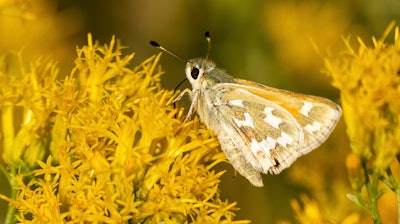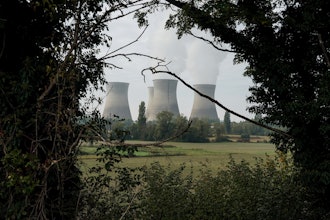
RENO, Nev. (AP) — Conservationists who are already suing to block a geothermal power plant where an endangered toad lives in western Nevada are now seeking U.S. protection for a rare butterfly at another geothermal project the developer plans near the Oregon line.
The Center for Biological Diversity is now petitioning the U.S. Fish and Wildlife Service to list the bleached sandhill skipper under the Endangered Species Act at the only place it's known to exist.
It says the project the Bureau of Land Management approved last year 250 miles (400 kilometers) north of Reno could ultimately lead to the extinction of the 2-inch-long butterfly with golden-orange wings.
“This beautiful little butterfly has evolved over millennia to thrive in this one specific spot, and no one should have the right to just wipe it off the face of the Earth,” said Jess Tyler, a scientist at the center who co-wrote the petition.
USFWS has 90 days to decide whether there’s enough evidence to conduct a yearlong review to determine if protection is warranted, so any formal listing is likely years away.
But the petition signals the potential for another legal fight all too familiar to Ormat Nevada, which wants to tap hot water beneath the earth to generate carbon-free energy the Biden administration has made a key part of its effort to combat climate change with a shift from fossil fuels to renewable sources. Opposition to those efforts in Nevada has come from conservationists, tribes and others who otherwise generally support greener energy supply.
“At a time when climate change is undisputedly one of the greatest threats to the planet, it is disappointing that the Center for Biological Diversity, a group with a mission to protect the environment, is attempting to stop the development of clean, renewable energy sources,” Ormat Vice President Paul Thomsen said in an email to The Associated Press.
The center and a Nevada tribe have been battling the Reno-based company in federal court since December over its other power plant scheduled to begin operation by Dec. 31 in the Dixie Meadows 100 miles (160 kilometers) east of Reno.
USFWS declared the quarter-sized Dixie Valley toad endangered on a temporary emergency basis in April.
Ormat agreed in a joint court stipulation Aug. 1 to suspend construction at least until September and perhaps until the end of the year to consult with the government to ensure compliance with the act.
The butterfly's listing petition, filed Aug. 8, comes 10 years after the service rejected a similar bid from WildEarth Guardians, citing a lack of imminent threat to the insect's habitat.
But the center says the situation changed when the bureau approved Ormat's project at Baltazor Hot Springs near Denio.
The power plant would sit outside the butterfly’s habitat, a single alkali wetland of around 1,500 acres (607 hectares) created by discharge from the Baltazor Hot Springs.
But tapping the underground water likely would affect the flows that support the plants that host the larva that hatch from the butterfly’s eggs and provide nectar for adults, the petition says.
Thomsen said Ormat has a long history of working with the government “to ensure that all habitats and ecosystems, regardless of their federally protected status, co-exist safely with the renewable energy plants we develop.”
The bleached sandhill skipper is a subspecies of skippers stretching from Washington to Arizona and Colorado. Its small geographic range and specific habitat make it highly vulnerable to extinction, the petition says.
“Geothermal energy is an important part of our clean energy transition, but it can’t come at the cost of extinction.” said Patrick Donnelly, the center's Great Basin director.
The petition says there are no official government counts of the butterfly's population, but scientific surveys from 2014-19 indicate it's in decline, with estimates ranging from fewer than 10,000 to hundreds.
Thomsen said Ormat shifted its original blueprint away from butterfly habitat. He said the plan BLM approved after a thorough environmental review includes years' of monitoring and mitigation plans in the event any potential harm to the insect emerges.
The petition claims no mitigation would offset the likelihood the project would alter the spring's hydrology "with the potential to dry up the hot spring altogether.”
“In short, the drying of Baltazor Hot Springs and the meadow it supports would be unmitigable and would result in the extinction of the bleached sandhill skipper."






















